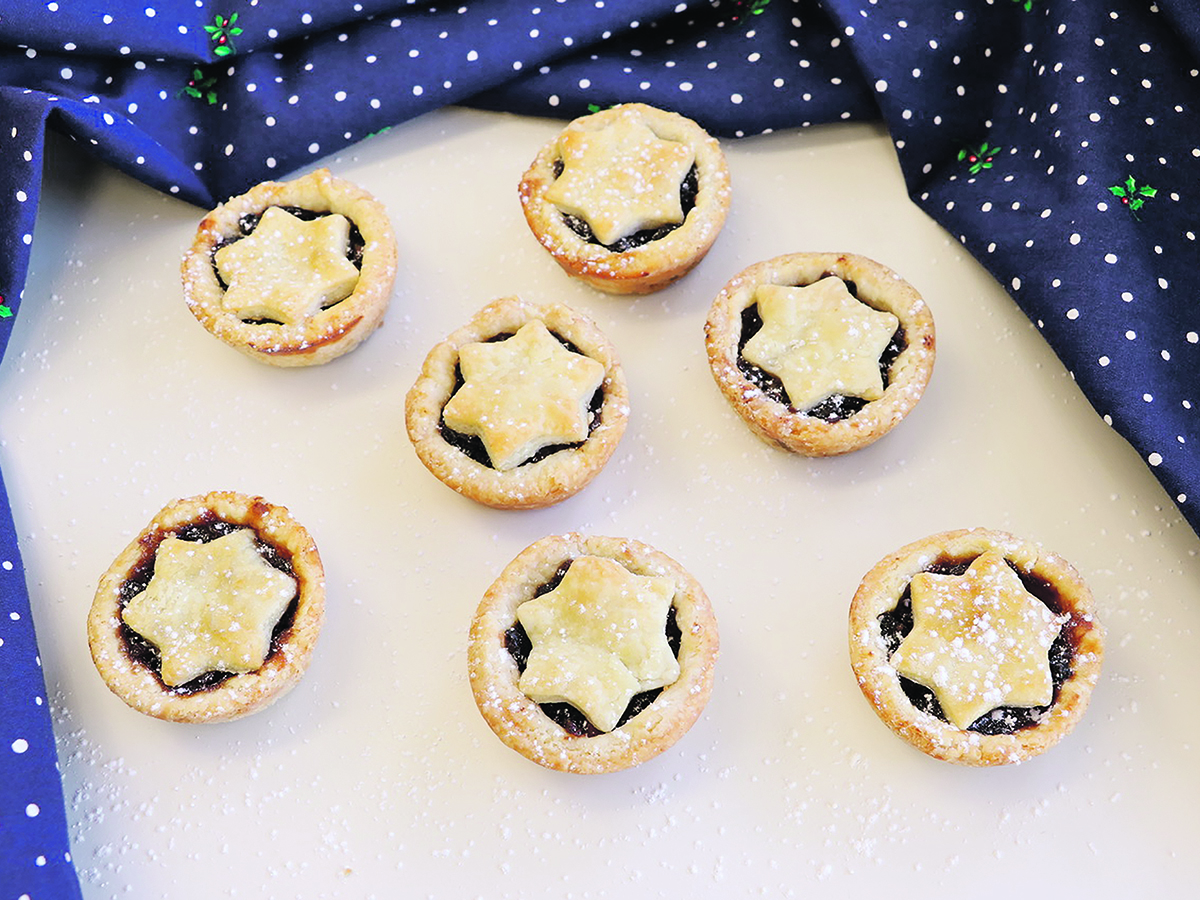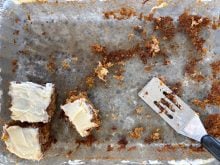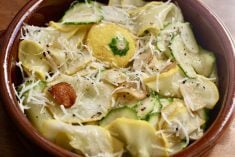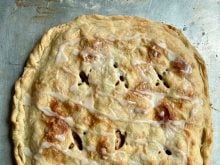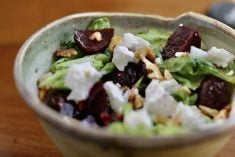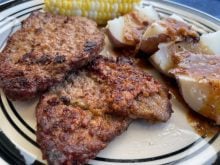Christmas desserts in my childhood home always had two fruity treats — Christmas pudding and mince tarts. The warm, fruity pudding was a must as far as my dad was concerned. He could hardly wait to get the main course over so we could enjoy the Christmas pudding with lots of rich vanilla sauce.
Both recipes have their origins in Britian, where my paternal grandmother was from. The roots for these recipes go back as far as the 12th century, when the returning Crusaders brought sugar and spices, such as cinnamon, clove and nutmeg, from the east.
In addition to warm spices and sugar, dried fruits, chopped apples and beef suet are shared ingredients in both recipes. The pudding also contains shredded carrots and potatoes.
Read Also
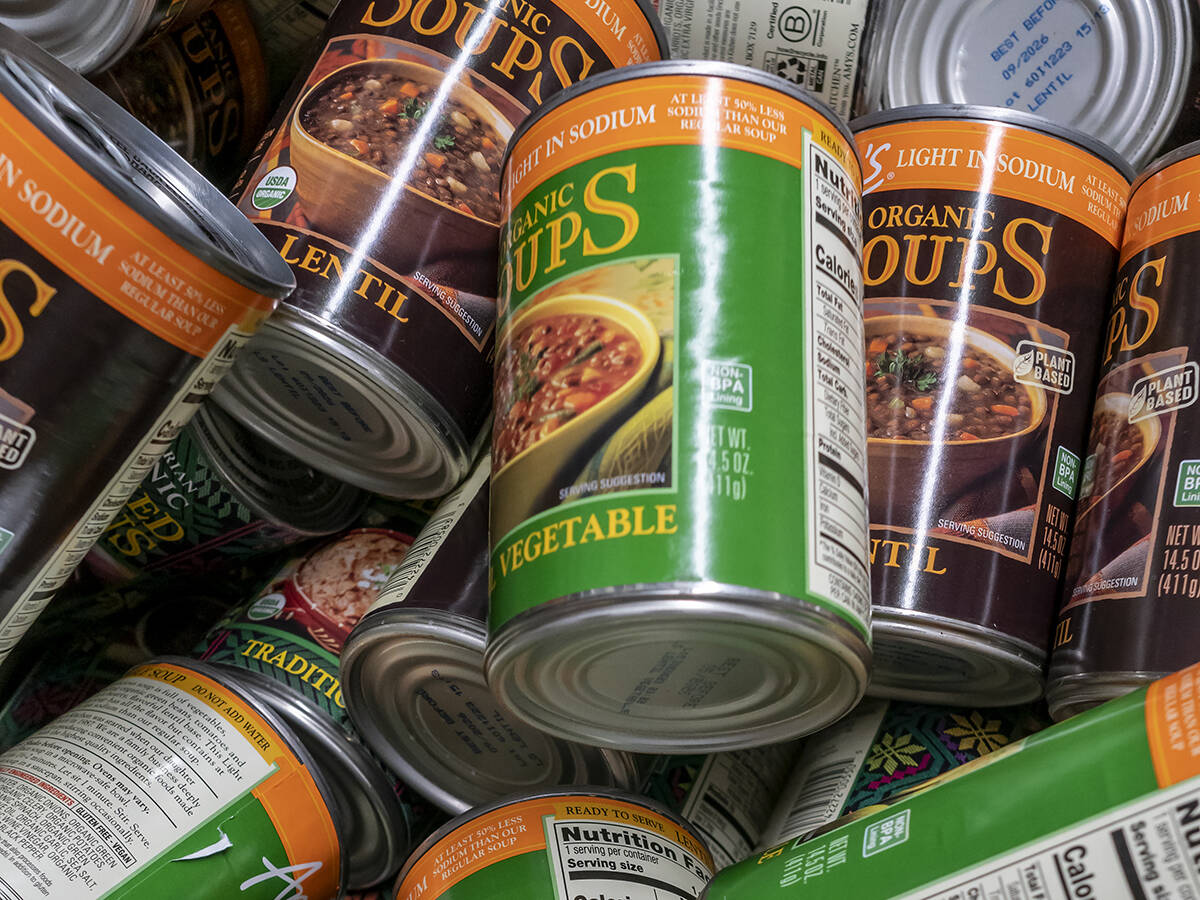
Sustainable food has ‘lost all meaning’: prof
That marketing strategy is deader than a doornail, says a University of Guelph professor who specializes in consumer preferences and perceptions of agriculture and food.
Eliza Acton, an English food writer who produced one of Britain’s first cookery books in 1845, Modern Cookery for Private Families, included a recipe for an economical vegetable plum pudding, “which contained potato and carrot, but no brandy”, which she declared to be “cheap and good”.
Her book introduced the now-universal practice of listing ingredients and giving suggested cooking times for each recipe. It was a best-seller, with 13 editions by 1853.
Early recipes for mince pies included meat, often beef tongue or wild meat, combined with citrus peel, dried fruits, sugar and spices. By the 19th century, cookbooks provided both meat-based and meat-free versions of the recipe. The traditional fat used in both versions of the recipe was beef suet.
Christmas carrot pudding
This recipe makes enough batter to fill a 12 cup (three litre) bundt pan or divide between two heatproof bowls or pudding moulds. The recipe can easily be multiplied for making several puddings at one time.
- 1 1/2 c. white flour 375 mL
- 1 c. brown sugar 250 mL
- 1 tsp. soda 5 mL
- 1/2 tsp. salt 2 mL
- 1 tsp. cinnamon 5 mL
- 1/2 tsp. ginger 2 mL
- 1/2 tsp. nutmeg 2 mL
- 1 c. raisins 250 mL
- 1 c. currants 250 mL
- 1 c. grated raw carrot 250 mL
- 1 c. grated raw potato 250 mL
- 1 peeled apple, chopped
- 1/2 c. mixed glazed fruit 125 mL
- 1 c. beef suet finely ground (see note) 250 mL
- or 1/2 c. melted butter cooled 125 mL
Note: Suet is the hard fat from beef and sheep that is found around the kidneys and loins. It is usually sold ground and then frozen in one-pound (.5 kg) packages. If you are not able to find suet or would rather not use it, butter or vegetable shortening can be used.
Prepare a pudding mould, bundt pan or heatproof bowl by thoroughly greasing with melted butter. Be sure to carefully grease all the grooves and bumps in the mould. Don’t use vegetable oil because the pudding will tend to stick.
Select a large pot with a lid, such as a Dutch oven, pasta pot or roaster, that the pudding container will easily fit in and can be covered for steaming. A rack or several jar lids are needed to elevate the pudding.
Mix flour, brown sugar, soda, salt and spices and set aside.
Measure raisins and currants into a bowl, cover with boiling water and let stand for five minutes. This is called plumping the raisins and allows them to soak up some of the water. This produces a moist and flavourful pudding.
Grate carrots and potatoes and put in a large bowl.
Drain raisins and currents and add to vegetables.
Add apple and glazed fruit. Stir to combine fruit and vegetables.
If using suet, mix in with fruit. If using melted butter, add after the flour.
Sift flour mixture over fruit mixture. Add melted butter and stir together to combine.
Spoon pudding into pudding mould/bowl, pressing down to pack into the design of the mould.
Cover with several layers of cheesecloth, tied with string to hold in place. Then tie the ends of the cheesecloth to create a loop for lifting the pudding out of the water. For safe lifting, insert a wooden spoon handle in the loop.
An alternative is to cover the top of the pudding container with three layers of parchment paper and tie with string. The end of the string can be looped over to create a lifting handle.
Place mould/bowl on a rack in the steaming pan to which two inches of water has been added.
Cover and steam for three hours. Check at least each hour to add more water if necessary.
Remove pudding from steamer, cool a few minutes, remove string and uncover.
Place serving plate over pudding and invert onto plate. Give pudding a little shake to release from mould.
Serve immediately with choice of sauce.
To store, remove pudding from pan and allow to cool completely. Wrap in parchment paper or plastic wrap and seal in plastic bag. Refrigerate for a week or freeze for three months. The pudding could be wrapped in cheesecloth soaked in brandy or rum and then sealed in a plastic bag.
To reheat, thaw pudding, wrap in foil and place in top of a double boiler and steam for 1.5 to two hours, or unwrap and place in a covered casserole and reheat, on medium power, in a microwave for three minutes and repeat one-minute intervals until heated through.
Sweet white vanilla sauce
- 1 1/2 tbsp. butter 22 mL
- 3 tbsp. flour 45 mL
- 1 pinch salt
- 1 c. milk 250 mL
- 1 1/2 tbsp. sugar 22 mL
- 1 tsp. vanilla 5 mL
Melt butter, add flour and salt and stir to form a paste. Add milk. Stir and cook until thick. If too thick, add more milk. Just before serving, add sugar and vanilla. Serve hot over hot pudding.
Lemon sauce
- 1 c. white sugar 250 mL
- 2 tbsp. cornstarch 30 mL
- 1 pinch salt
- 1 1/2 c. hot water 375 mL
- 2 tbsp. butter 30 mL
- 2 tbsp. lemon juice 30 mL
- 1 tsp. vanilla 5 mL
Combine sugar, cornstarch and salt in saucepan. Stir in hot water, butter and lemon juice. Cook over medium heat until thickened. Add vanilla. Serve warm over pudding.
Caramel sauce
- 1/2 c. whipping cream 125 mL
- 1/2 c. butter 125 mL
- 3/4 c. dark brown sugar, packed 175 mL
- 2 tbsp. light-coloured corn syrup 30 mL
- 1 tsp. vanilla 5 mL
In saucepan, stir together whipping cream, butter, brown sugar and corn syrup.
Bring to a boil over medium-high heat, whisking occasionally; reduce heat to medium. Boil gently for three minutes.
Remove from heat; stir in vanilla. Serve warm over pudding.
Mincemeat
Yields 1 quart (1 litre). The recipe is easy to double or triple.
- 1 lb. finely chopped well-marbled beef steak, lamb or wild game (optional) 450 g
- (If meat is omitted, add an extra 1 1/2 c./375 mL raisins and/or currants)
- 1 1/4 c. raisins 310 mL
- 1 1/4 c. currants 310 mL
- 1/2 c. golden raisins 125 mL
- 2 c. tart apple, finely chopped
- 7 oz. beef suet, shredded or ground 225 mL
- 2 c. dark brown sugar, packed 500 mL
- 4 tbsp. candied peel 60 mL
- 1 1/2 tbsp. almonds, blanched and finely chopped, optional 22 mL
- 1 lemon, zest and juice
- 2 tbsp. apple cider vinegar 30 mL
- 1 1/2 tsp. ground cinnamon 7 mL
- 1/2 tsp. ground nutmeg 2 mL
- 1/4 tsp. ground cloves 1 mL
- 1/4 tsp. ground allspice 1 mL
- 1/4 tsp. ground mace 1 mL
- 1/4 tsp. ground ginger 1 mL
- 2 tbsp. brandy 30 mL
- 2 tbsp. dark rum 30 mL
Combine all ingredients except brandy and rum in a medium-sized pot and slowly bring to a simmer to prevent scorching. Reduce heat to low and simmer uncovered for about two hours, stirring occasionally, more toward the end to prevent burning. If liquid reduces too soon and the mincemeat starts to stick or scorch on the bottom, add a little bit of apple juice or water.
Another option is to combine all ingredients in a slow cooker, heat to bubbling and then turn to low and cook with lid on for two to three hours.
Stir in brandy and rum. (Note: If you prefer to have the alcohol cooked out, add them at the same time as the other ingredients.)
Spoon hot mincemeat into hot sterilized jars. As mixture cools, the suet will rise to the top and harden, creating a seal to help preserve the mincemeat. The mincemeat is delicious used immediately but for optimal flavour, let it sit in the refrigerator for one to two weeks before using.
For longer storage, especially if meat is included, place in freezable containers and freeze.
Use to make mince tarts, mince pie, muffins or replace the date filling in matrimonial bars to create mincemeat bars.
Adapted from daringgourmet.com
Mince tarts
Preheat oven to 400 F (200 C).
Use a favourite pastry recipe or premade unbaked tart shells.
Use dough scraps to cut out holiday shapes, like stars, trees or bells.
Scoop mincemeat into each tart and press gently to fill any spaces.
Top with pastry holiday shapes and gently press into mincemeat.
Brush milk over pastry edges and shapes.
Bake for 15 to 17 minutes or until golden brown.
Let tarts cool before removing because hot pastry will break apart. When cool, use a knife to gently lift out.
Dust tarts with powdered sugar.
Reheat to serve.
Betty Ann Deobald is a home economist from Rosetown, Sask., and a member of Team Resources. Contact: team@producer.com.




